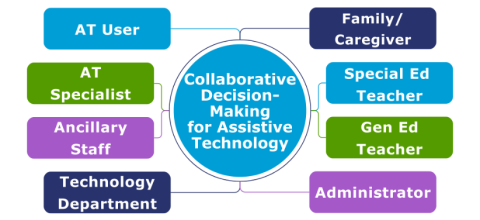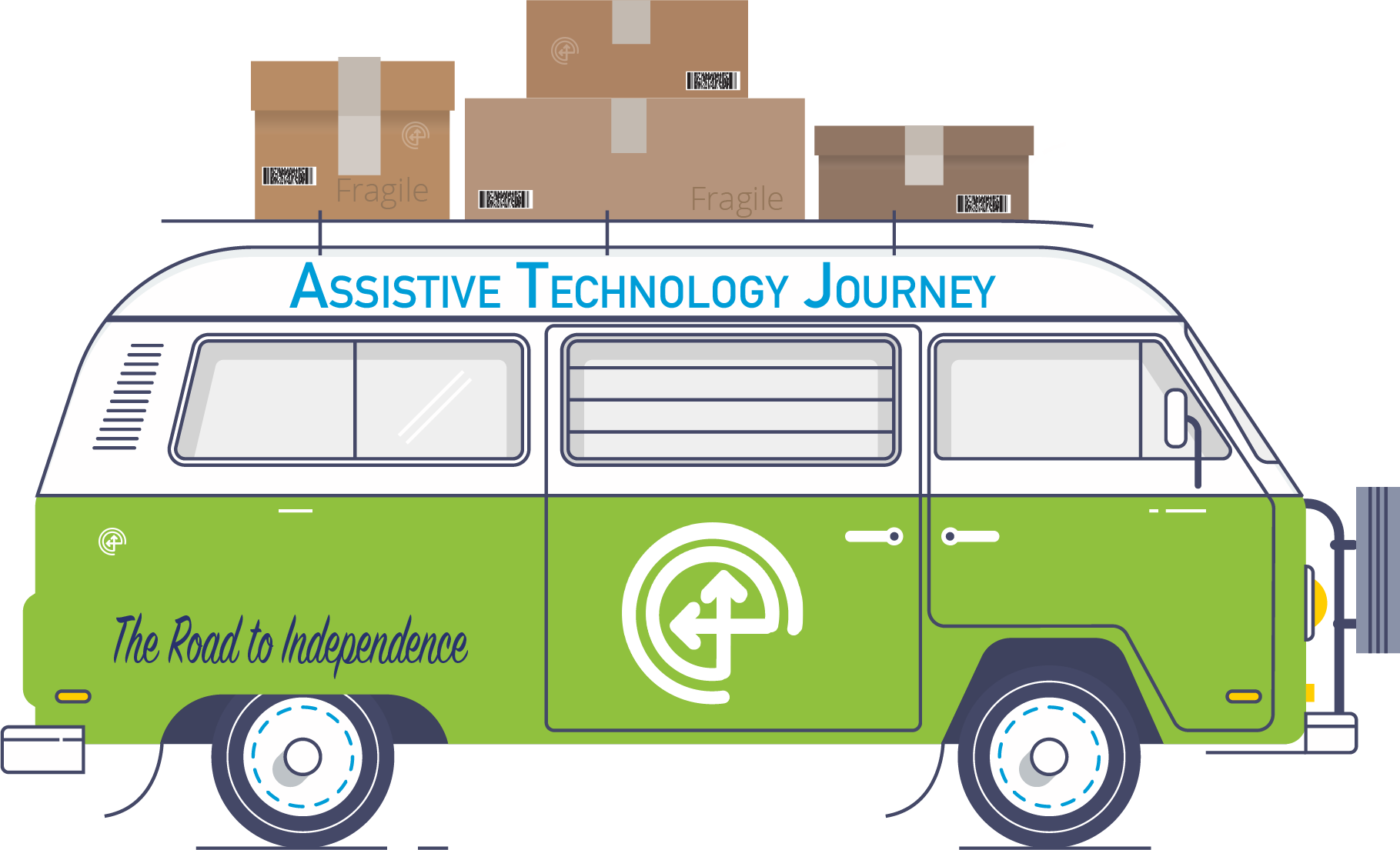Assistive Technology Fundamentals
Description
As an educator, you may have students who receive special education services and need assistive technology (AT) to complete tasks, but you need help figuring out where to start. During this quick win, you will learn foundational knowledge of assistive technology, including how to define AT tools and services, debunk common myths, and understand the need for a collaborative approach.
Why Try Something New?
Assistive technology consideration is not only a legal requirement in the individualized education plan (IEP) process but can also create significant positive outcomes for our students. A collaborative approach to assistive technology can help educators view learners as a whole and eliminate potential gaps in services and information sharing.
What is AT?
Assistive technology, or ‘AT’, is defined as “any item, piece of equipment, or product system, whether acquired commercially off the shelf, modified, or customized, that is used to increase, maintain, or improve functional capabilities of a child with a disability” (Individuals with Disabilities Education Act, 2004).
The definition of assistive technology also includes the services that individuals provide to support a person with a disability to choose, acquire, and use the AT tool itself.
Assistive technology tools support individuals in many different areas, including communication, hearing, vision, mobility, executive functioning, academics, environmental control, computer access, and more. Individuals with various disabilities will require different AT, and AT needs will more than likely change over the lifespan.
AT encompasses a wide variety of tools, including non-electronic and electronic items. Many people believe that assistive technology is always costly, but this is simply not true! Many types of AT are free or low-cost and can be made using items that are already available.
Watch the video to learn more about specific types of AT. After watching the video, reflect on what tools or services you already provide to students that fall under the category of assistive technology.
Debunking Common AT Myths
There are many misunderstandings surrounding AT. In January of 2024, the Office of Special Education Programs (OSEP) released the Myths and Facts Surrounding Assistive Technology Devices and Services document. We encourage educators to reflect on this document as well as to share it with other educators, families, early intervention service providers, special and general educators, ancillary staff, administrators, and technology specialists.
Alt+Shift created AT Myths and Facts Graphics (Full Text for the AT Myths and Facts Graphics) which highlight the content from the AT Guidance released by OSEP. These graphics were created to highlight the information contained within the original OSEP document in an easily shareable format for various audiences (e.g. families, general and special educators, administrators, etc).
In this video, we take the following 5 myths about AT and aim to debunk them by uncovering the truth.
- Myth #1: An AT evaluation must be conducted prior to providing an AT device and service to a student with a disability.
- Myth #2: Students can learn to use an AT device on their own; educators have no obligation to provide training to students or their families.
- Myth #3: AT devices and services are only needed for the academic classroom and only for use at school.
- Myth #4: The use of AT devices lowers a student's motivation because it does the work for them.
- Myth #5: Only staff who specialize in AT can deploy AT devices or provide AT services.
(Spoiler alert: All of these statements are false!)
After reading this section and watching the video, which myths had you believed to be true? How will your practice change now that these myths have been debunked?
A Collaborative Approach to Assistive Technology

This diagram illustrates collaborative decision-making for assistive technology involving the: AT user, AT specialist, ancillary staff, technology department, family/caregiver, special education teacher, general education teacher, and administrator.
A collaborative approach is essential when choosing and implementing AT for our students. Having diverse perspectives to drive decisions is crucial to success, especially for our students with complex needs.
As you read this, you may be thinking, "I'm a general education teacher, I don't know where to begin" or perhaps, "I don't know who I would collaborate with because I'm the only resource room teacher in my building." Watching this Quick Win with others in your building might be a great first step toward developing a collaborative approach.
Without collaboration, we may end up with AT tools that aren't the best overall solution for the student. In the school environment, this could look like:
- a county-wide AT specialist purchasing a unique text-to-speech software, without realizing that similar software is already available on a student's device,
- a special education teacher introducing a core vocabulary board with eight pictures to a student, while the speech-language pathologist is using a board with 36 pictures, or
- an occupational therapist introducing an adaptive pencil grip to help with independent writing, but the student continues to struggle with handwritten assignments at home since the tool is only available at school.
Some tools may be universally available within a classroom environment, such as visual schedules, single message switches, or screen magnifying software. When a student with an IEP requires these tools to increase, maintain, or improve skills, it becomes AT.
Considering a tool as assistive technology makes collaboration even more important because it needs to be documented in the IEP process. The IEP team has to agree that the tool is necessary, it works, and it aligns with the student's needs.* At a minimum, assistive technology must be considered by the IEP team every time a student's IEP is developed or revised.
The number of individuals needed to collaborate on AT decisions will vary based on the strengths and needs of the student. For example, a teacher who is introducing an adaptive pencil grip may collaborate with the occupational therapist. In contrast, for a student who uses eye gaze technology, a collaboration would likely include occupational therapists, physical therapists, speech-language pathologists, general and special educators, family members or caregivers, the technology department, and, importantly, the students themselves.
Watch the video for a detailed explanation of how each role can support collaborative AT decision-making. Take a moment to reflect on which individuals you would collaborate with regarding assistive technology for your students with IEPs.
*Stay tuned for an upcoming Quick Win on the differences between AT, Universal Design for Learning, and Accessible Educational Materials.
Where Can I Learn More?
The state of Michigan has the following resources to support educators who would like to trial different AT tools with students:
If you would like to learn how to develop a collaborative-based approach and systems that support the consideration, selection, and implementation of AT, you can:
- Engage in the asynchronous AT Journey Online Modules (as an individual or a group)
- Sign up for our newsletter to receive updates on upcoming statewide events
- Explore an Alt+Shift partnership
